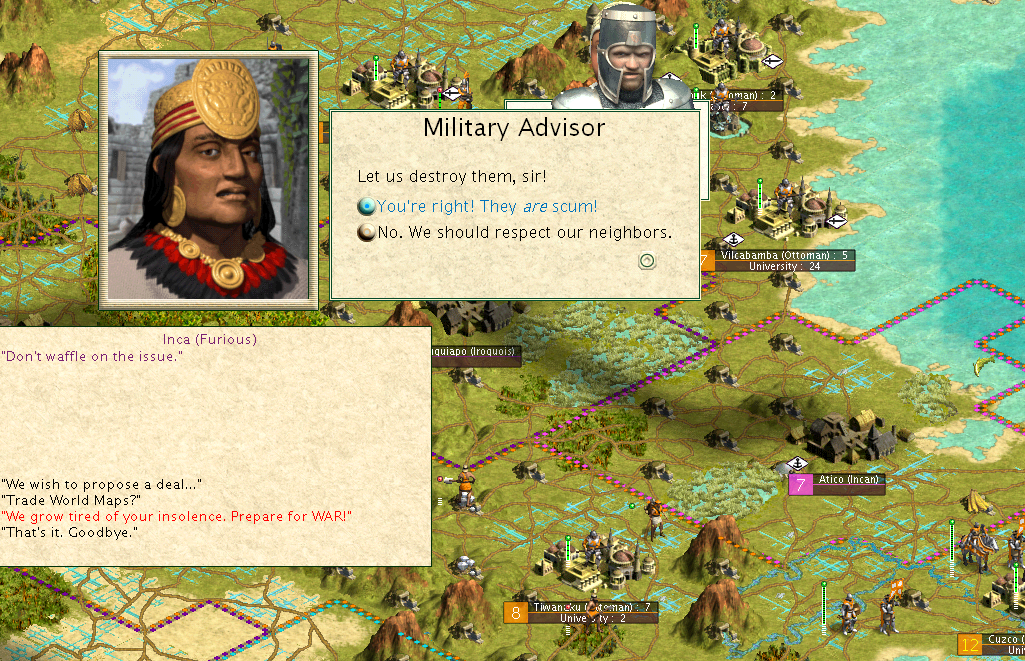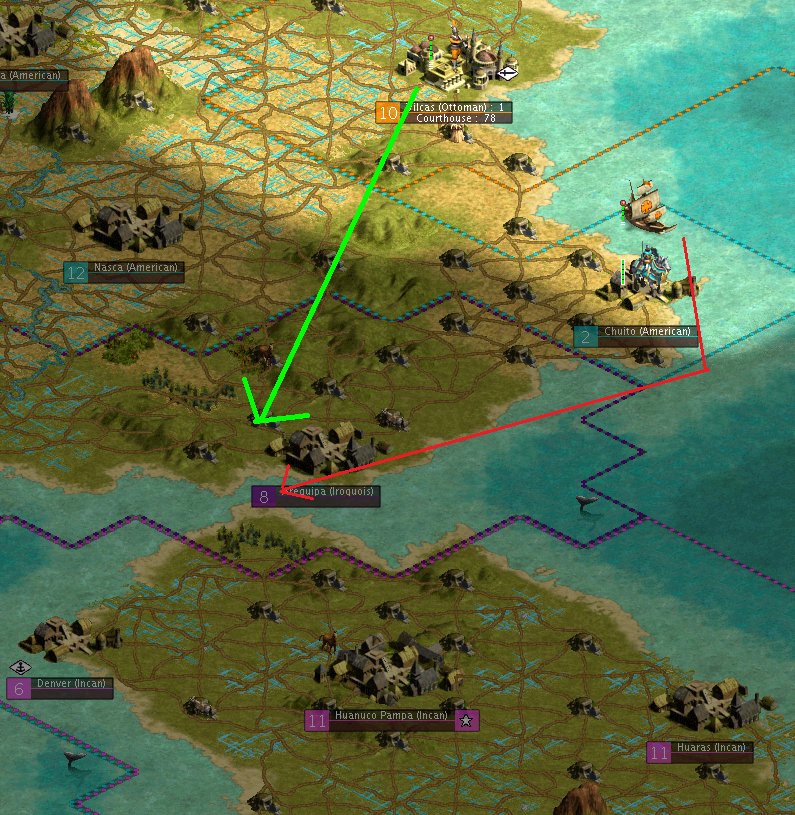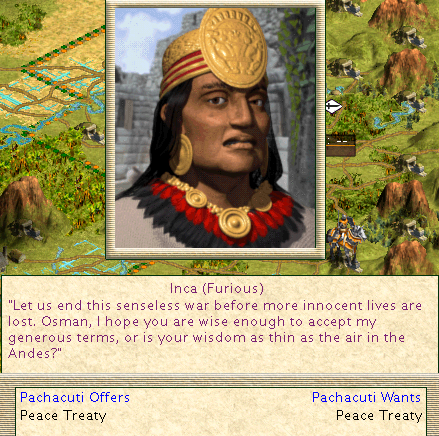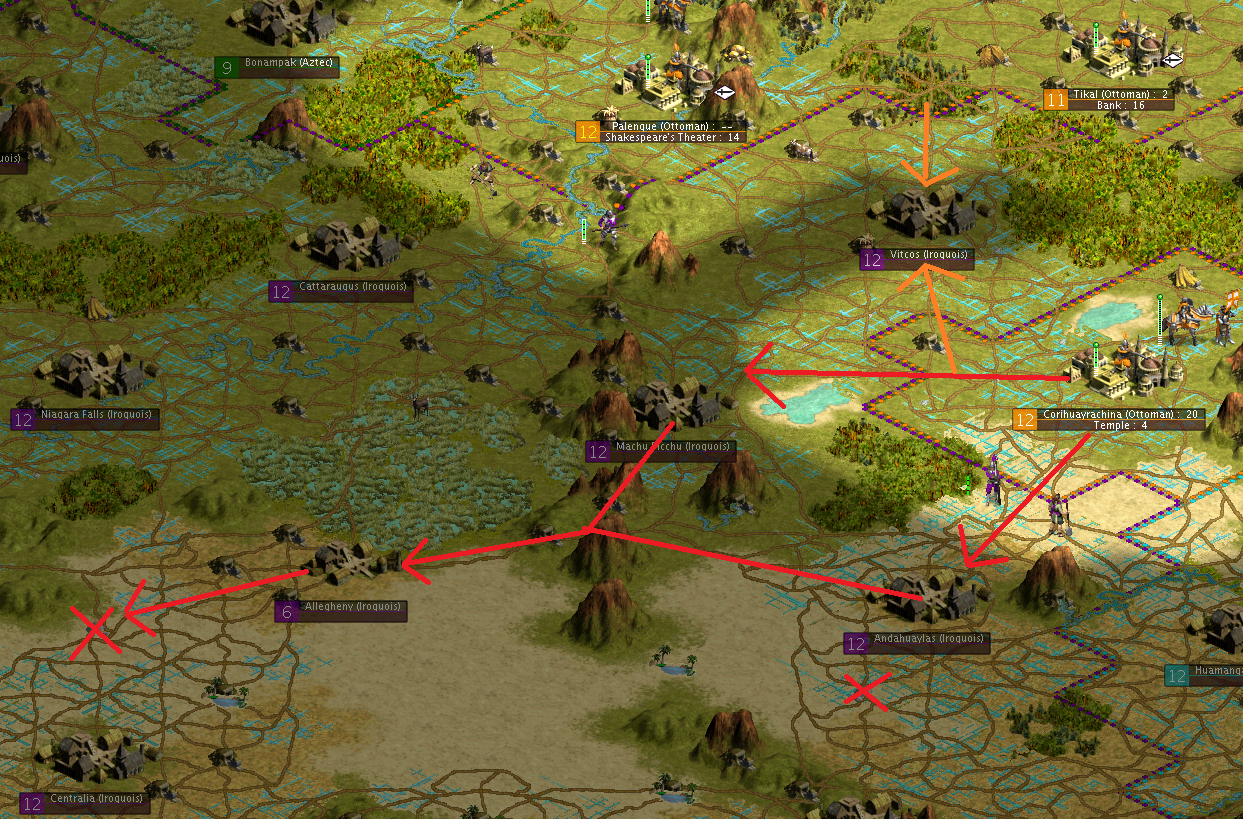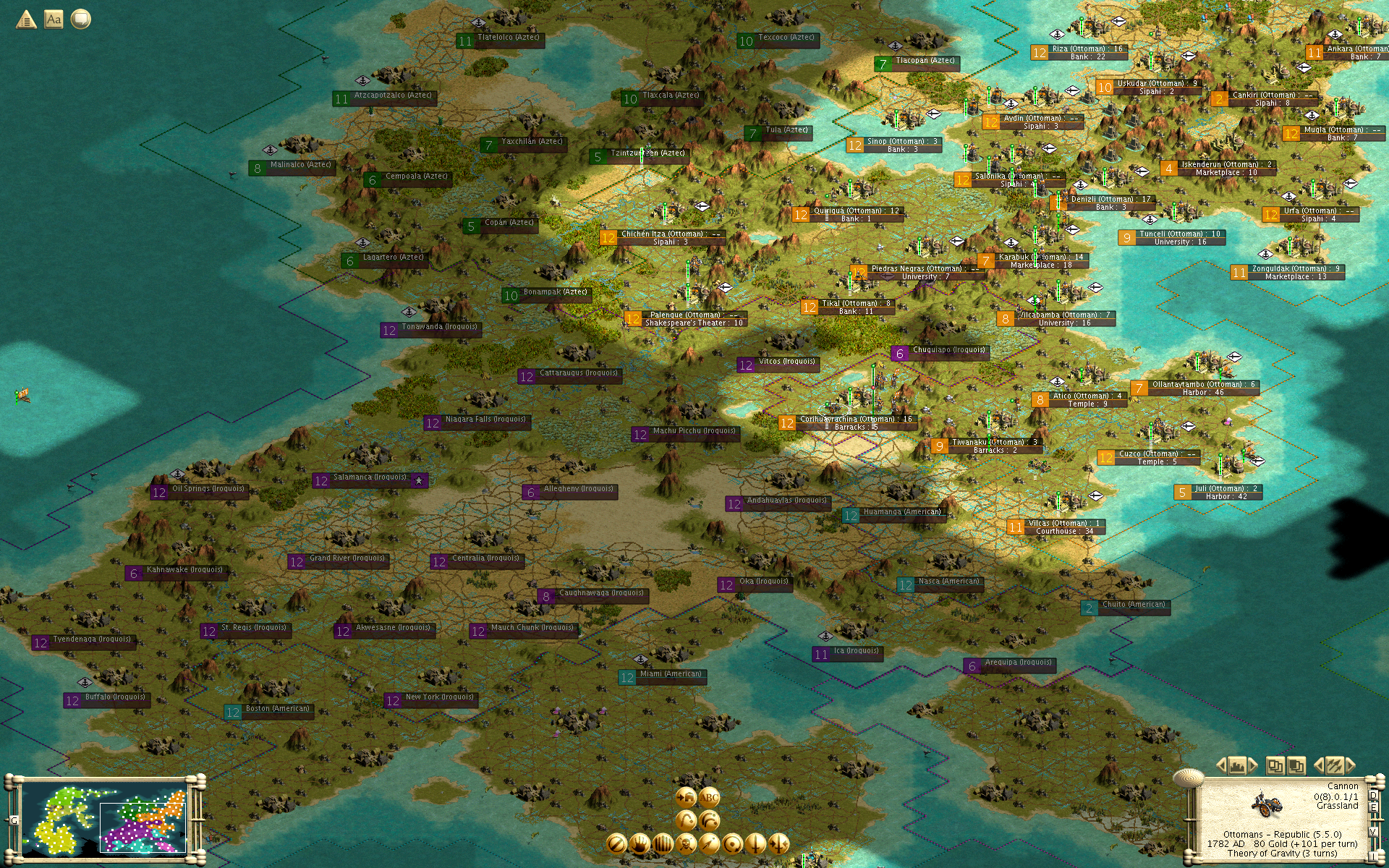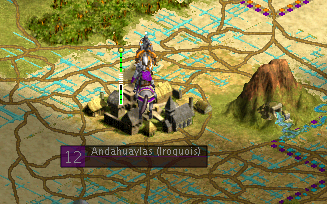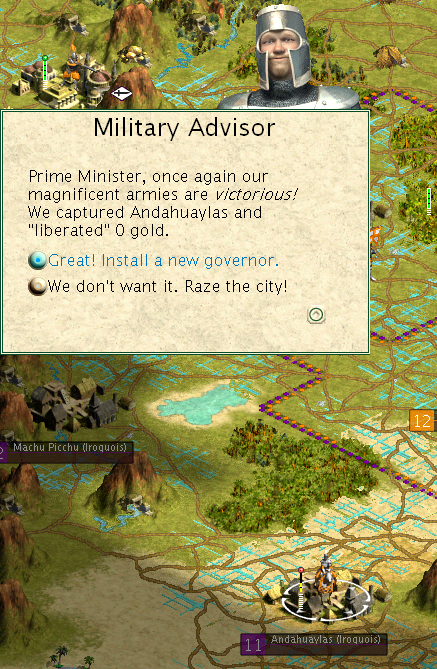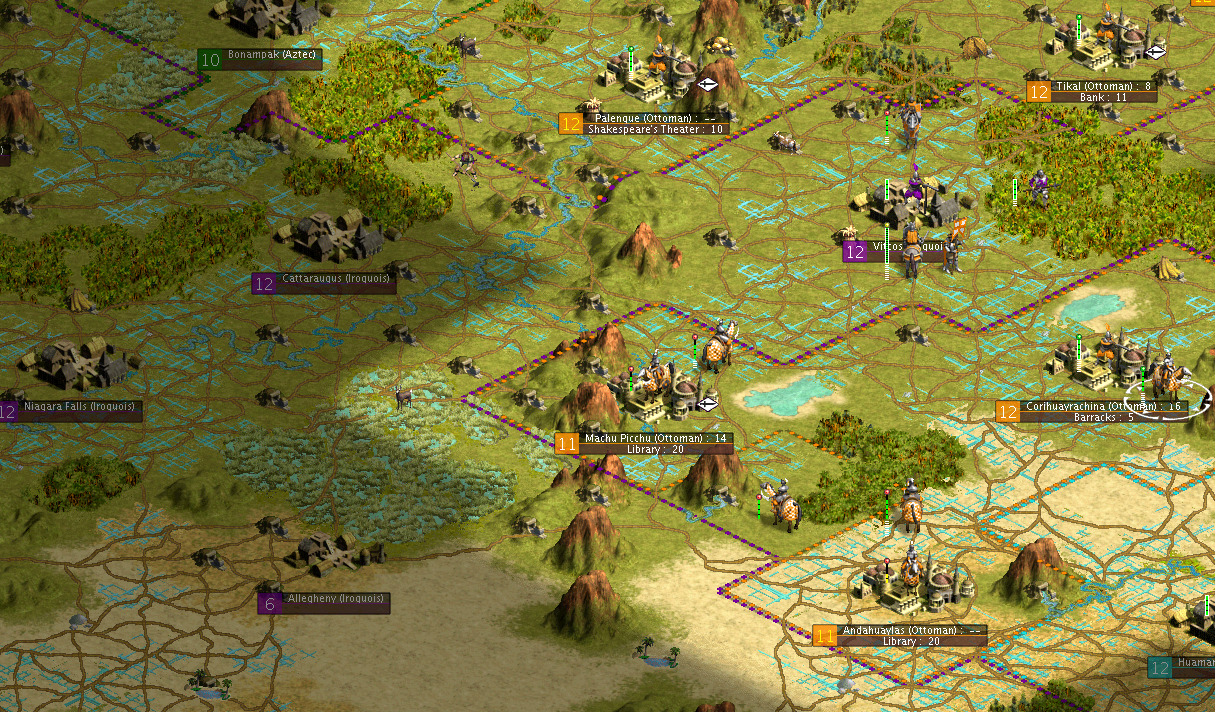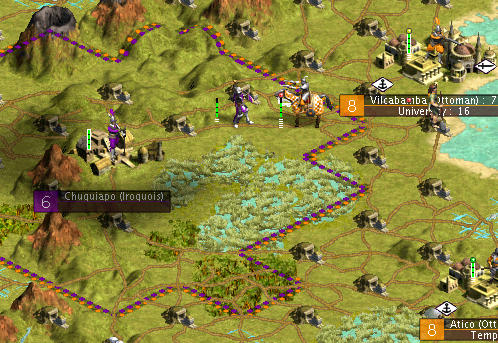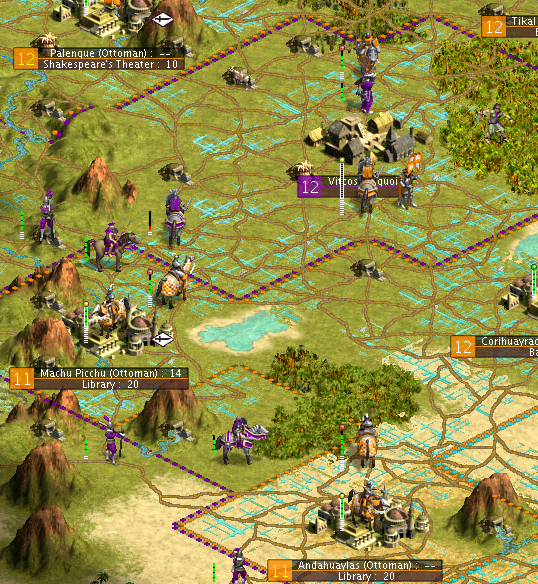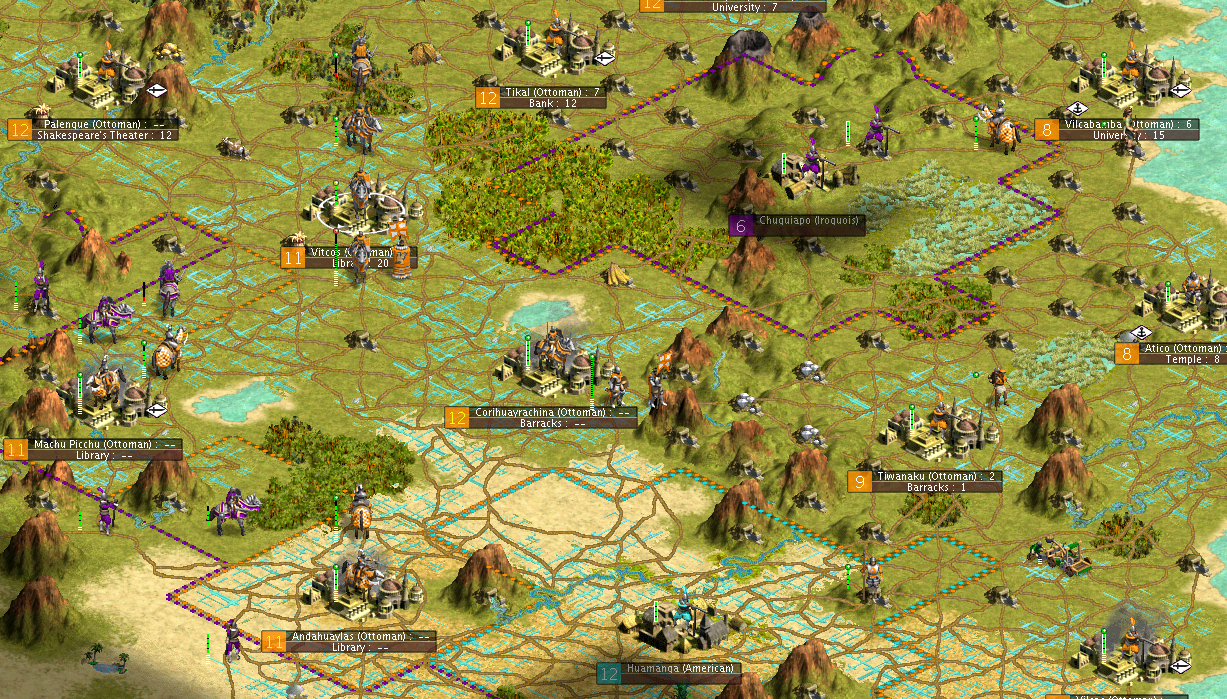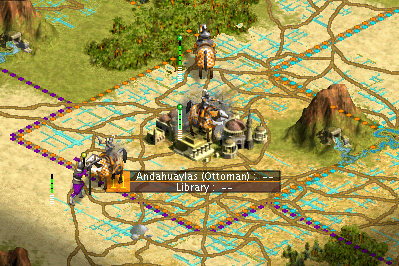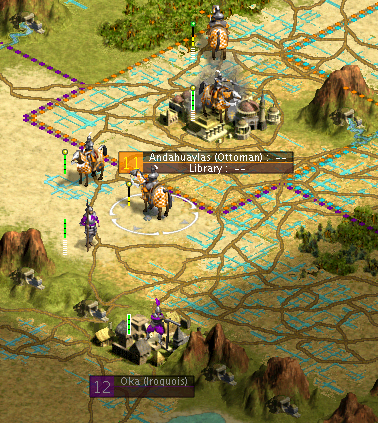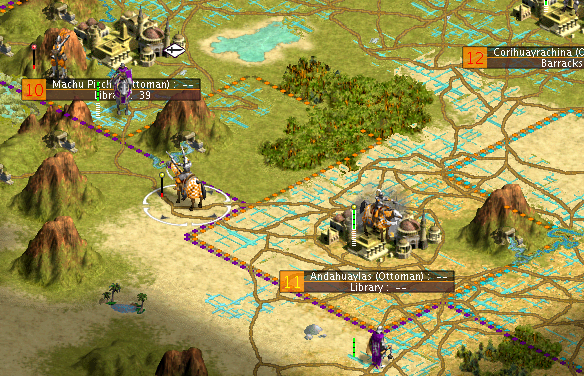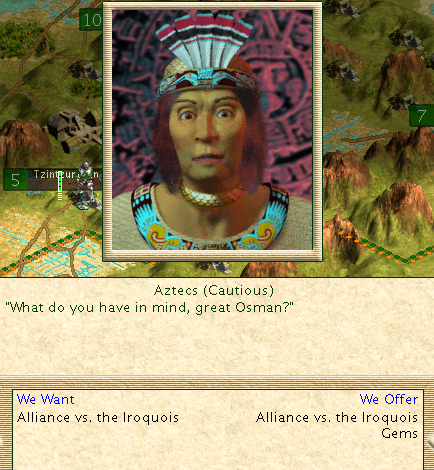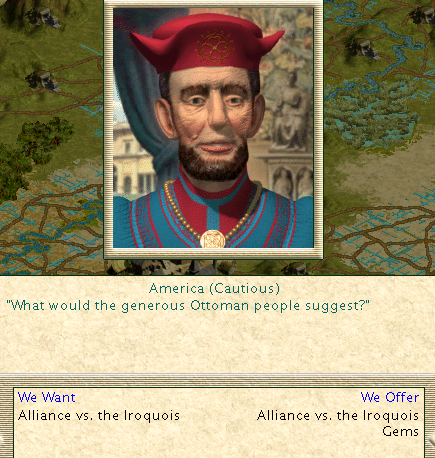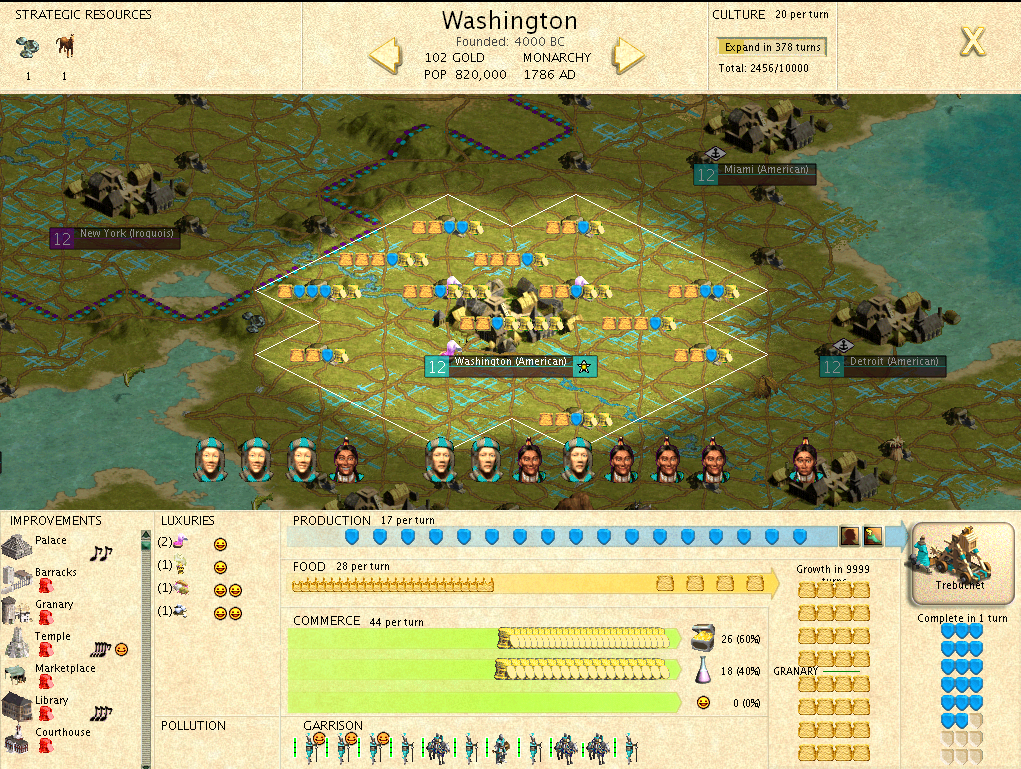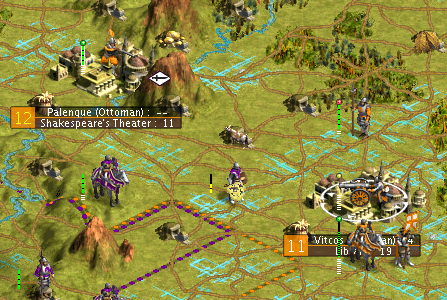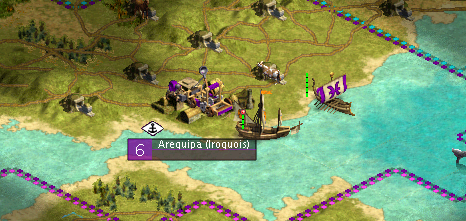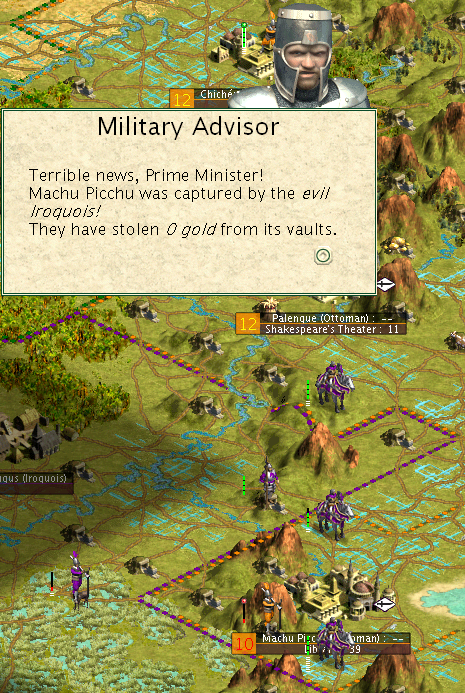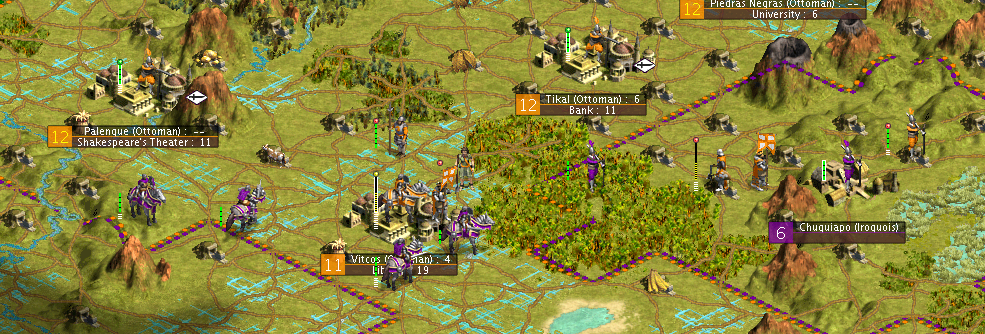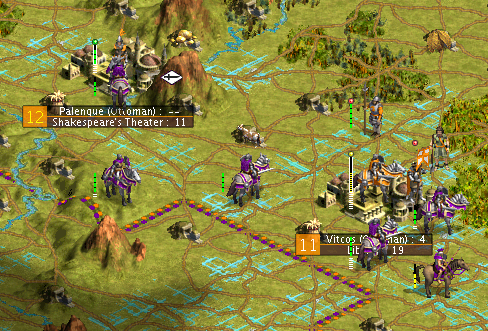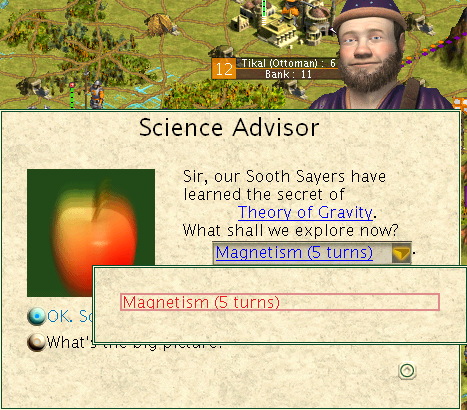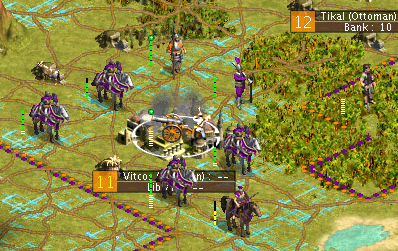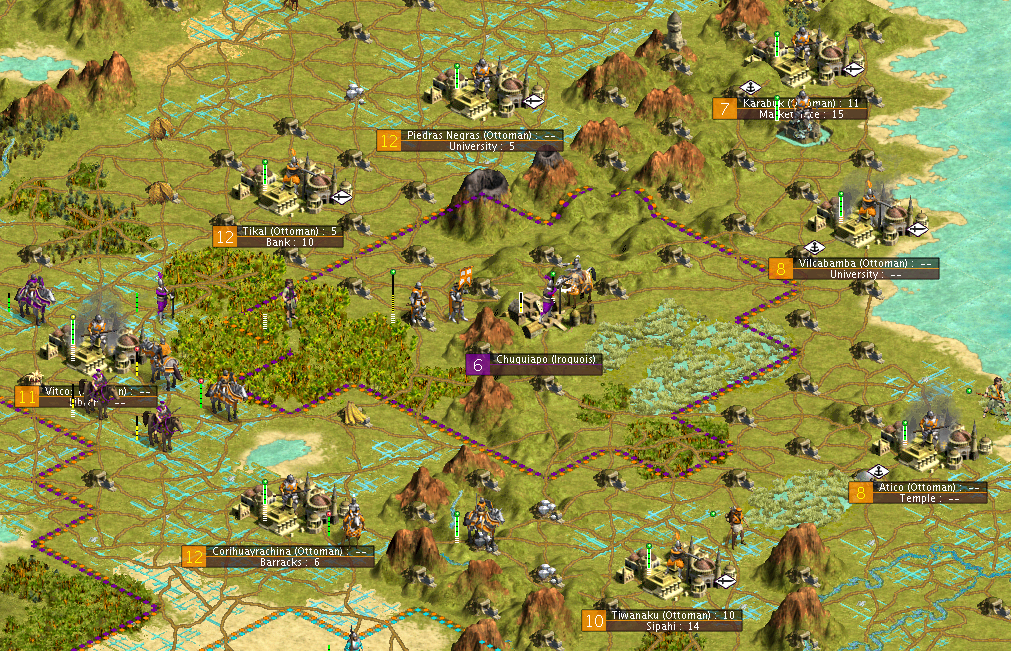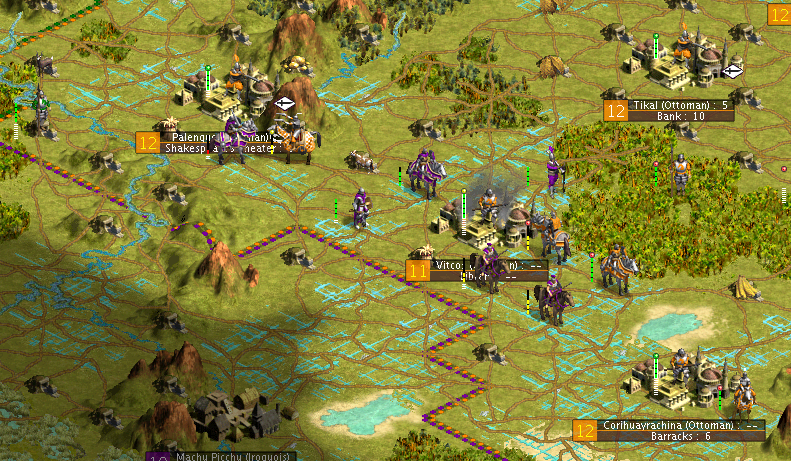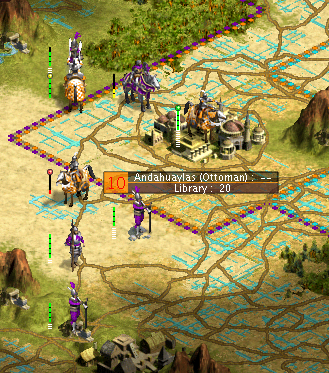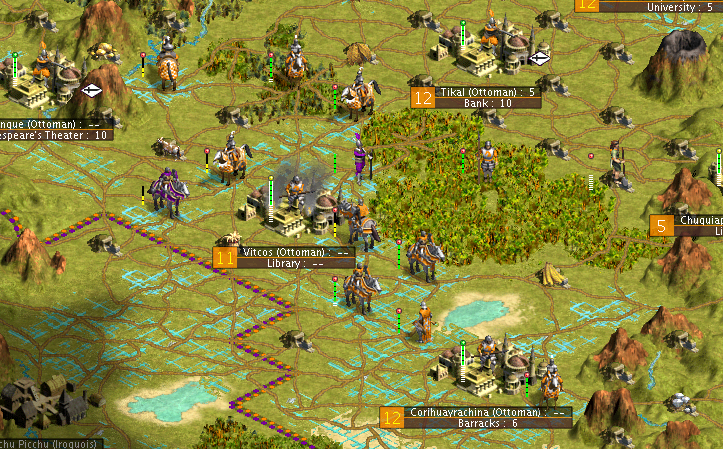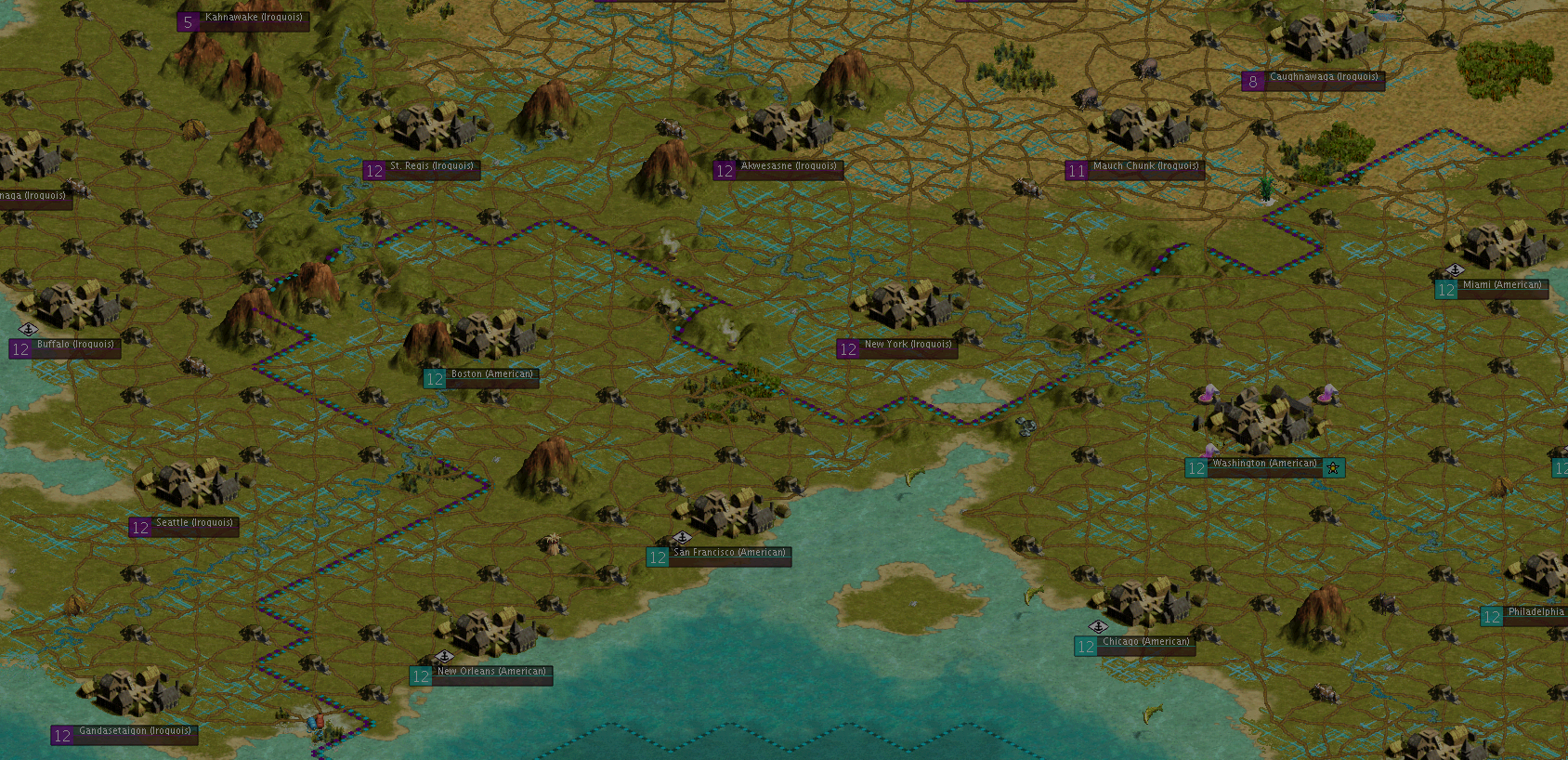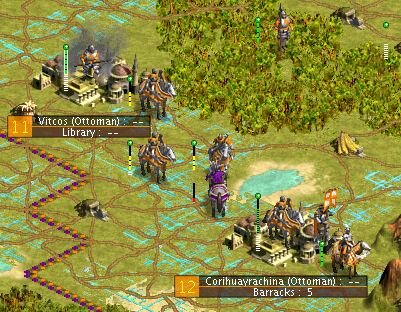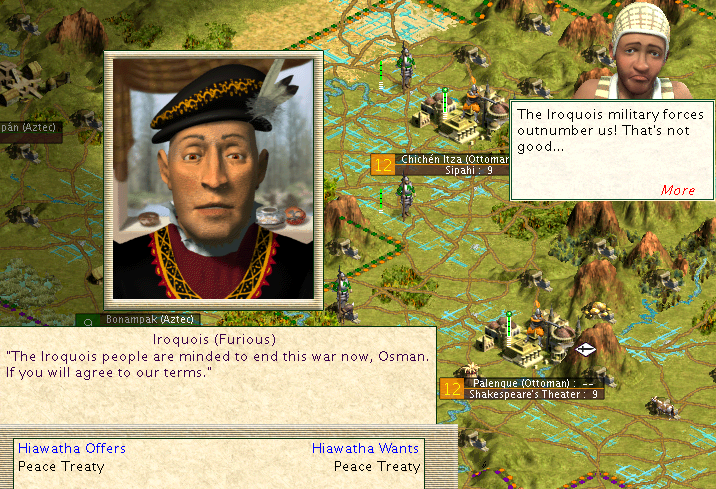Party Twenty-Nine: The Ottoman-Iroquois War, Round Three: New Participants
1786 is not over yet, and neither are our advances - hopefully, though, our retreats are. Orhan's Army is ready to kick into gear, and help take Chuquiapo.
It's an uphill battle, but Orhan wins while losing 10 hitpoints. Without knowing how many Musketmen are in reserve, we decide to wait one more turn to try to take the city, when some more Sipahi will have arrived and we'll have a better idea if we have a major problem on the frontier.
Vitcos is the sight of our first counteroffensive cannonade.
The Medieval Infantry is taken care of, but we decide to let the nearby Knights attack us - perhaps at Palenque, perhaps at Vitcos.
With that, we hand over the reigns of fate. And the Inca respond...
By bombarding one of our ships! But more importantly, they indeed take Macchu Picchu.
The Musketman near there falls soon after, and the Iroquois then focus on approaching Vitcos.
But, a few troops do attack Palenque.
We force two Knights to retreat, and lose a Pikeman. In a potentially more devastating more, The Iroquois then intercept a stack of a couple dozen workers whom I'd failed to stop after the reversals of 1784.
Thankfully, they are not disbanded, meaning we can likely recapture them soon, and have a workforce when the railroad arrives.
The Aztecs appear in force near Chichen Itza this turn, appearing to head towards Vitcos, and thus where the Iroquois are now. We don't expect them to arrive in time, but appreciate the show of force. From America, we see only a Pikeman and an Archer, but given that their core is boxed in by the Iroquois, we expect that their movements are in fact more consequential than what we saw from the Aztecs.
The Theory of Gravity wraps up in 1788.
Following proper mystical process, we ask the Abacus of Advancement what to research, and it deigns... Magnetism! We never could have guessed without it.
1788 marks the start of war weariness, unfortunately, rather early in the war. The Iroquois do not appear to have changed the focus of their war very much, and our citizens fear a repeat of 1784. Approval plummets to an all-time low of 47%, and the government begins to realize its future is not assured at the next election. As such, three possible luxury imports are considered - furs from Zululand for Gems, Spices from Persia for Gems, Silks, and money, and Incense from the Aztecs for Silks and Saltpeter. We only have one surplus source of Gems, meaning "all of the above" is not a valid option.
After sleeping on it for a night, we decide to trust the Aztecs with gunpowder.
This will help us in the short term, and likely not hurt us in the longer term. Next century: trading some uranium to Montezuma!
We decide on the Persians as our other trading partner. It's less of a good deal than the Zulu option, but better for the balance of power, and thus seems like a better long-term choice.
The two deals combine to bring our happiness up to 70%, and secure our continued economic and manufacturing prosperity. The cities that still have happiness issues are highly correlated with cities that either lack a Marketplace, or were recently captured from the Iroquois. Put simply, the results of the trades are quite satisfactory.
With our happiness issues resolved, our attention turns to defending Victos. The eleven Cannons there will come very much in handy.
Half a dozen hitpoints are knocked off of the Iroquois, less than we'd hoped, but better than nothing. It will be really nice to have artillery! Still, it's enough for Suleiman to begin our efforts.
Two Knights and an Ancient Cavalry are felled by our general, and his army reduced to 4 hitpoints - sufficiently few that the incoming Elite Pikeman will be the first defender of the city. Next, we bring in a Knight from Corihuayrachina.
This is unsuccessful. But two Knights from the Gem mine near Tiwanaku, in the lower right of the picture, manage to punch through the enemy line to Vitcos, defeating two Iroquois Knights.
This is followed by a misclick, sending a Sipahi to a sure-fire death in the desert, and another to a tile at which it can provide no help. Darn miswritten orders! So, we decide to refocus our efforts elsewhere, to see how many troops we can send to Vitcos. First is breaking through at Chuquiapo, which would consolidate the front and allow more defensive troops to advance.
A come-from-behind victory reveals that there was only one Musketman left, with a Spearman behind it. This lets us take the city, freeing up two Sipahi. But before they advance, we make sure we don't forget about our workers.
They scurry to safety in the east, and then we advance a Knight from Tikal, and the two newly-free Sipahi.
At this point, the remaining Iroquois force is three Knights (with a combined 4 hitpoints), three Ancient Cavalry (with a combined seven hitpoints), a Medieval Infantry, and a Musketman.
The two remaining Knights in Vitcos take our a Knight and an Ancient Cavalry, and the two Knights left at the Gem mine defeat two more Ancient Cavalry, leaving a situation that is quite manageable. So the focus moves to Andahuaylas, where four Knights are approaching and various foot troops are a turn farther away. The Sipahi there are at least mostly healed now.
The pictured Musketman-under-attack was guarding three of the Knights. All four are easily dealt with by Sipahi, and I decided to leave the foot troops for the next turn, to allow the remaining Sipahi to be fully healed.
Two Sipahi are still in Corihuayrachina, and I send them to clean up the remnants by Vitcos. This proves easy, and in the end, only two Iroquois troops remain in sight.
This is a better result than we had expected; we may be gaining numerical superiority. You'll notice a few Sipahi arriving from the core; had they been ever so slightly quicker, we may have defeated the Iroquois by Vitcos entirely.
With that situation sorted, we end our turn.
I'm now pretty sure the problem is at my end and that it's a phone/bandwidth issue, because when I logged in on the phone earlier today (over our home WLAN), I was again shown only about half the images -- but not the same group as before. And now on my Win8.1 desktop, also through Firefox but now with a hardwired (kinda sorta) LAN-connection, I can see all the attached images.


